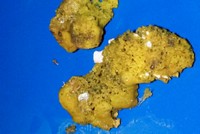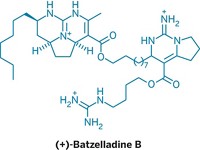Advertisement
Grab your lab coat. Let's get started
Welcome!
Welcome!
Create an account below to get 6 C&EN articles per month, receive newsletters and more - all free.
It seems this is your first time logging in online. Please enter the following information to continue.
As an ACS member you automatically get access to this site. All we need is few more details to create your reading experience.
Not you? Sign in with a different account.
Not you? Sign in with a different account.
ERROR 1
ERROR 1
ERROR 2
ERROR 2
ERROR 2
ERROR 2
ERROR 2
Password and Confirm password must match.
If you have an ACS member number, please enter it here so we can link this account to your membership. (optional)
ERROR 2
ACS values your privacy. By submitting your information, you are gaining access to C&EN and subscribing to our weekly newsletter. We use the information you provide to make your reading experience better, and we will never sell your data to third party members.
Synthesis
Changeup Yields Indole Alkaloid
ACS Meeting News: Cyclization and nitrene insertion star in synthesis
by Carmen Drahl
September 5, 2011
| A version of this story appeared in
Volume 89, Issue 36
By turning a heterocycle’s reactivity on its head, chemists have achieved the first total synthesis of the natural product (–)-N-methylwelwitindolinone C isothiocyanate. The indole-containing alkaloid reverses pump-protein-mediated resistance to anticancer drugs in tumor cells, so it represents a potential lead for treating drug-resistant cancers. The research was presented last week at a symposium sponsored by the Division of Organic Chemistry at the American Chemical Society national meeting in Denver (J. Am. Chem. Soc., DOI: 10.1021/ja206538k).

Only two welwitindolinones, which are found in blue-green algae, have succumbed to total synthesis. And the ones with densely packed [4.3.1] bicyclic cores, including N-methylwelwitindolinone C isothiocyanate, have proven especially tricky to make. For University of California, Los Angeles, assistant professor Neil K. Garg and colleagues, the key to forging that core was in reversing indole’s inherent reactivity.
Normally, indoles make excellent nucleophiles, but in 2009, Garg’s team found a way to make them behave like electrophiles instead, by generating a reactive intermediate called an indolyne (Org. Lett., DOI: 10.1021/ol802958a). An indolyne cyclization features prominently in Garg’s route to N-methylwelwitindolinone C isothiocyanate, as does a late-stage nitrene insertion to functionalize a congested carbon. Indolyne chemistry “opens the door to somewhat unconventional strategies for building indole alkaloids,” Garg told C&EN.
“Garg’s construction of the [4.3.1] bicycle is a beautiful example of indolyne chemistry in an extremely complex setting,” said Sarah E. Reisman of California Institute of Technology, who has synthesized a related natural product but did not attend the meeting.
“The endgame transformations certainly required considerable experimentation to work out, and thus the efficiency of the indolyne chemistry in providing sufficient material was key to the success,” added indole natural product expert John Wood of Colorado State University.
In Denver, Garg discussed how his group recently swapped deuterium for a key hydrogen atom and thereby improved the yield of the nitrene insertion. “The immediate plans are to make the other welwitindolinones and hopefully send them off for biological testing,” he told C&EN.





Join the conversation
Contact the reporter
Submit a Letter to the Editor for publication
Engage with us on Twitter